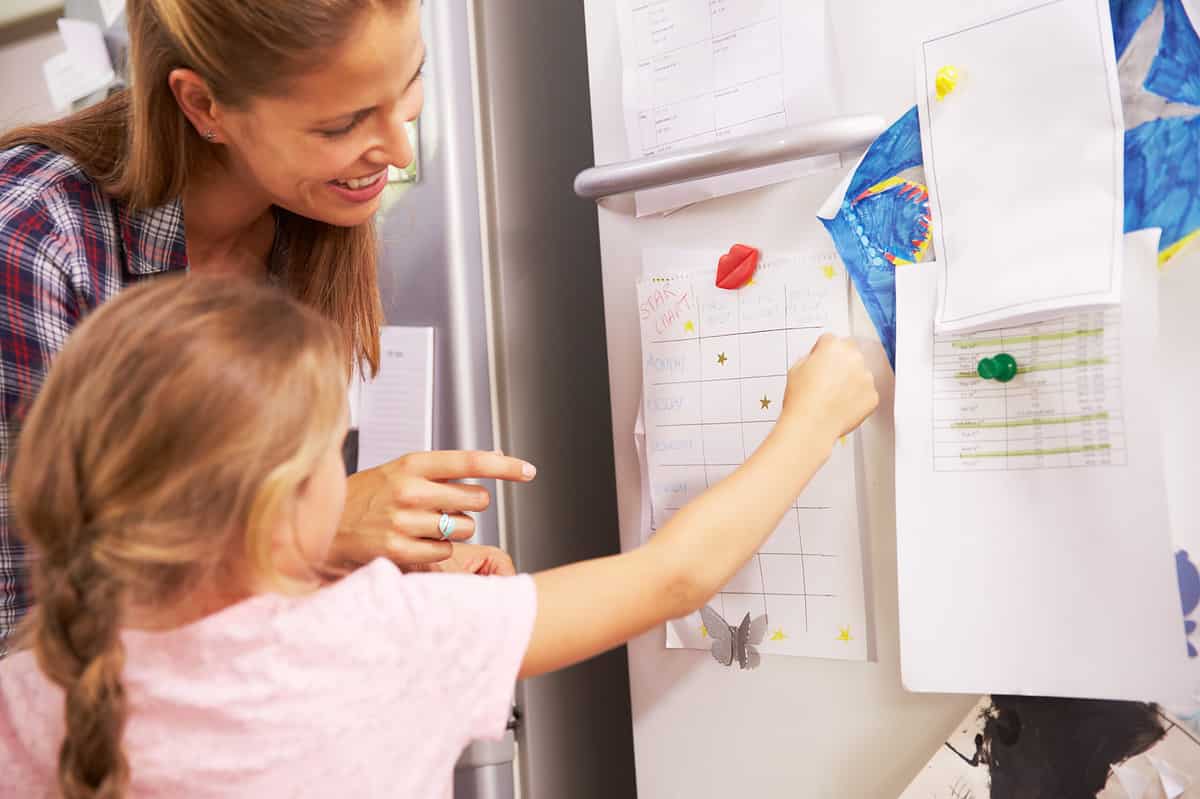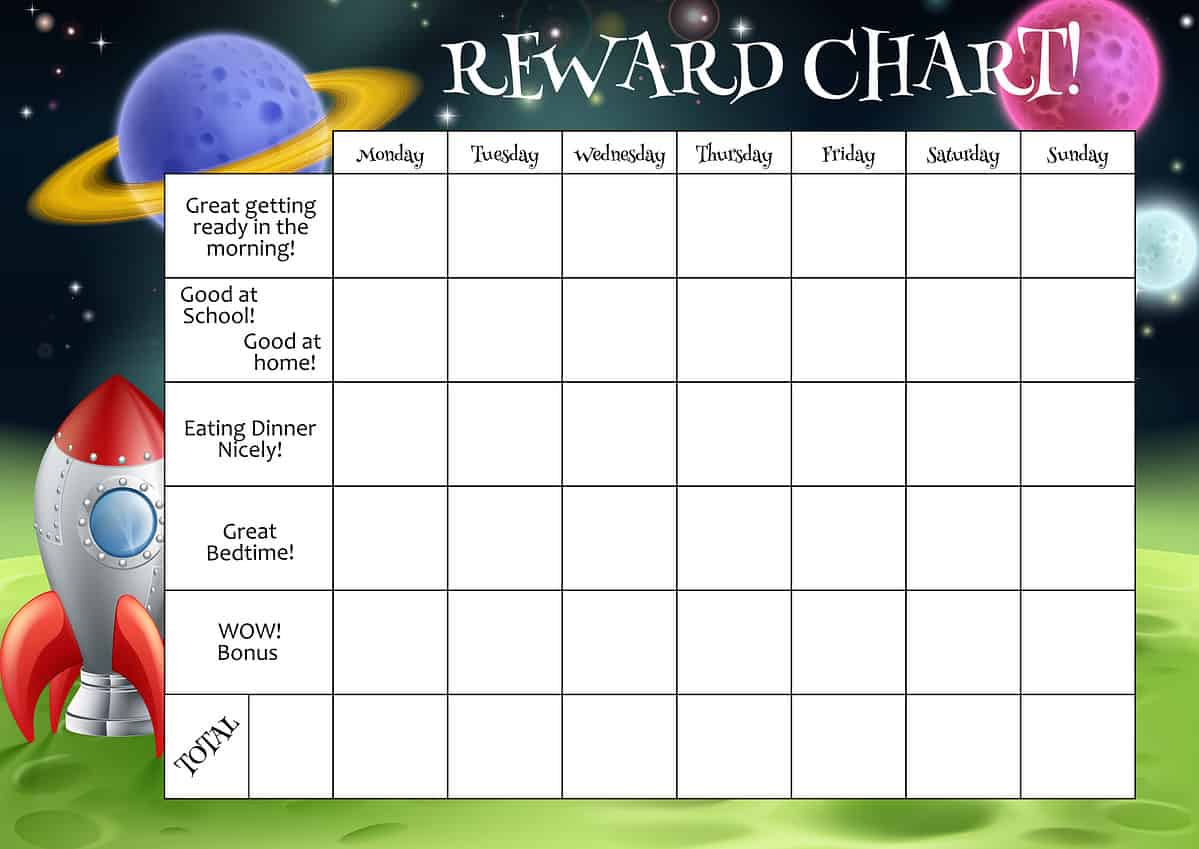During childhood, children learn to navigate their behavior and how to interact with the world. They can be emotional and act out when things aren’t going their way. As they go through the developmental stages of childhood, from babies to toddlers to big kids, they will have many emotional ups and down that can result in negative behavior. Processing and working through those emotions are all part of the growing process. Monitoring and rewarding positive behavior with a behavior chart that tracks and reinforces positive behavior is an excellent option for many families.
At different developmental stages, children will have behavior problems. Each new transition and developmental stage comes with a new set of issues. From sharing to following instructions to making friends, children's behavior reflects how they feel about themselves and their world. Many schools and classrooms use behavior charts or trackers to guide students to be their best selves in the classroom. But these charts and trackers aren’t just for school; families can use behavior charts and trackers at home too.
Why Use a Behavior Chart

©Monkey Business Images/Shutterstock.com
A behavior chart is a visual way to track a child’s behavior. Children can earn stickers, points, or small prizes for good behavior. Behavior charts and trackers are a great motivation for some students. Seeing visual cues helps them keep track of their actions and understand what is expected of them. Small rewards and positive reinforcement are key to using a behavior tracker successfully. Each child is different, and parents may need to adjust what rewards look like for each individual child.
Younger children enjoy sticker charts or small toys for rewards. Toddlers and preschoolers will enjoy choosing their own stickers and are easily motivated by little trinkets and toys. The key is making sure the chart is colorful and simple for them to understand and follow.
Older children may prefer a points system where they can earn bigger items as a reward for achieving a specific goal. Older kids learning household responsibilities and chores benefit from a structured chore or routine chart.
According to the American Academy of Child and Adolescent Psychiatry, participating in household chores and having age-appropriate responsibilities are key to raising healthy, happy children. They go on to explain that there is a myriad of benefits to children doing household chores, like learning time management and organizational skills, which lead children to be more independent thinkers, and the result is higher self-esteem and more successful personal and later professional relationships.
The overall purpose of a behavior chart is to help children understand the importance of following instructions and specific rules as to how their behavior has positive and well as negative consequences.
How to Use a Behavior Chart

©Christos Georghiou/Shutterstock.com
A behavior chart only works if the child is on board and part of the planning. So before you start using a behavior chart, you need to think of the end goal. Consider what you are hoping to do with this behavior chart. Because behavior charts reinforce positive behavior, the first step is defining what good behavior looks like in your household. Are you trying to stop a certain behavior, for example, fighting with siblings or using bad language? Or are you trying to start new habits like doing homework after school or cleaning, or helping with the laundry? Once you know the goal, you can plan a behavior chart or tracker that will work for your distinct situation.
The more specifically you can determine why you are making a behavior chart, the easier it will be to reach goals and create new positive habits.
Things to Avoid with a Behavior Chart
- Removing earned rewards
- Too many behavior changes and rules
- Avoid emptying your pocketbook for expensive rewards and keep things in perspective.
Beyond the Behavior Chart
Recently, some experts and educators began reconsidering the effectiveness of behavior charts, believing that for some children, they do more harm than good. The argument against behavior charts focuses on children’s anxiety and struggle to reach goals as a form of shaming. Essentially each child is different, and how parents use a chart or tracker is the key to its success.
In a classroom, a behavior chart serves the purpose of keeping children on task and gauging how well they are behaving and following rules in relation to their peers. But at home, it can function in a different, more inclusive, less restrictive way. For example, parents and the child discuss the behavior followed by the child’s role in the family and everyone's responsibilities to the household. When parents make the child part of the conversation and allow children to design their goals, this keeps them intrinsically motivated and makes them more invested in reaching their goals regardless of the reward. Although a reward, in some form, is still a good idea.
Be Flexible and Allow Adjustments
Regular check-ins and self-assessments are an excellent way to have an ongoing discussion about improvements. Check-ins and self-assessments throughout the process can give children the sense that they have control over the situation and that they are in charge of making good choices that align with reaching their goals.
The image featured at the top of this post is ©Ground Picture/Shutterstock.com.
